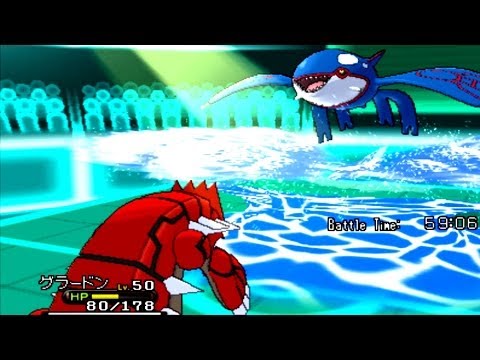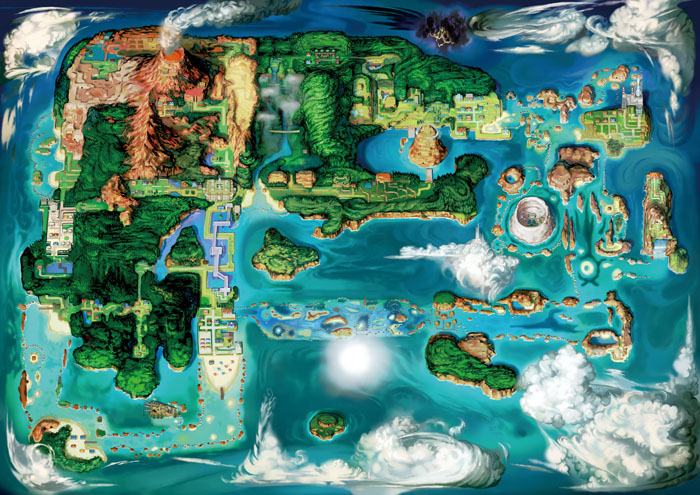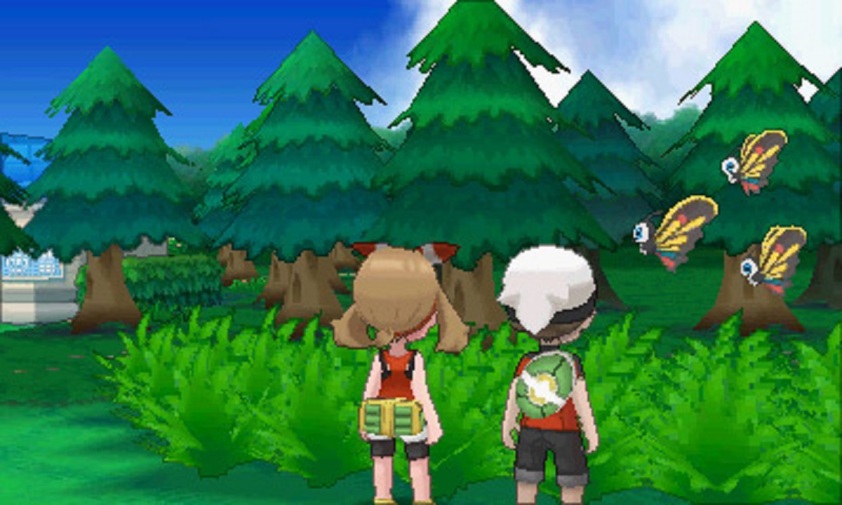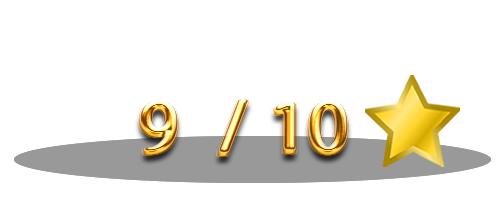Pokémon games have always been a staple on portable Nintendo systems, so when it was announced that there was a remake of the third-generation games on the 3DS, using the new Pokémon X/Y engine, I was excited. I missed the originals the first time through (so far, the only generations I haven’t played are the original third-gen games and generation five) and I was very excited for the chance to play through what looked like one of the best Pokémon games.
Version Reviewed: Pokémon Alpha Sapphire
Alternate Version: Pokémon Omega Ruby
Remake of: Pokémon Sapphire (with Omega Ruby based on Ruby)
System: 3DS
Differences between versions: Pokémon are exclusive to either version and the main teams are different (Team Aqua in Alpha Sapphire and Team Magma in Omega Ruby)
What I’ve Played: Just over 30 hours, beaten the main storyline, caught a decent amount of Pokémon on routes (the Pokédex hasn’t been completed, however), and completed the Delta Episode
I Have Yet To: Complete the National Pokédex, and I haven’t beaten the Battle Maison yet (the replacement for the originals’ Battle Tower)
For those of you who haven’t played a Pokémon game before, the formula stays the same in most of them. You start out by choosing a character (male or female), then a name, and then a Pokémon, which is one of three types: fire, water, or grass. After you choose your first Pokémon, you proceed out into the world, capturing more Pokémon of different types (such as flying type or fighting type) and battling other Pokémon trainers. Once you are strong enough, you battle the gym leaders, of which there are eight, situated in different cities around the region. In between all this you’ll be defeating an enemy team who wants to steal Pokémon and/or change the world, so you’ll have to thwart them, generally by capturing or defeating a legendary Pokémon. After you have all eight gym badges, you can fight the Elite 4, the four toughest trainers, and then the toughest trainer of all, the champion.
In Omega Ruby or Alpha Sapphire (henceforth shortened to OR/AS, respectively), the region (country/continent) you travel around is Hoenn. Hoenn has a good variety to it, the right side of the region is mostly water, which you can surf across, and the left side is land with deserts, caves, and mountains (and, of course, cities).
The basic story in OR/AS is that the respective team in each version wants to use the legendary Pokémon (on the version’s box) to send the world back to how it was in the beginning. It’s a little silly, but it’s still an enjoyable story. The story is paced very well, and I always wanted to know what Team Aqua was up to next, and what they were going to with whatever item I just saw them steal. The game never takes too long without introducing a new development in the story, whether it be related to the new Primal Reversions of the legendary Pokémon, or defeating more Team Aqua grunts.
Unfortunately, there were a few times where I got lost, or it wasn’t clear where to go next, although you’ll usually figure it out pretty quickly. In my case, I wasn’t sure whether to follow Team Aqua or continue to the next city, but ended up following Team Aqua, which was the right decision, as we travelled to the city straight afterwards.
Where this game shines, though, is in the graphics. The game, while it doesn’t use the 3D well, is still amazing to look at. Game Freak has done a superb job updating the graphics to suit the look of X and Y. Occasionally there was an odd camera angle, but this occurred very rarely. For the most part, the game’s new camera angle, and being able to move in all directions, is superb.
I was never able to get into X, but for some reason this game captivated me in a way X couldn’t. In X, it felt like my character was on a grid, only able to move diagonally. Here, though, it feels like I have more control of my character than ever before. I also got stuck grinding in X (even with the EXP share on), but here there was no issue with levels. You do become very overpowered if you use the EXP share in this game, so, for an added challenge, turn it off.
Of course, this game includes a host of new features as well, in particular the PokéNav. This is a little device that sits on the touch screen and performs a variety of different functions. At first it starts off as a map of Hoenn, which is useful to see where your character is and what direction you have to go when the path twists and turns. After a while you’ll gain the original touch screen use from X, which includes Super Training (a new way to train your Pokémon), Pokémon Amie (where you can pet and play games with your Pokémon) and the Player Search System, which has all the online functionality of previous games (the Global Trade System, for instance, as well as Wonder Trade). I have to admit that Wonder Trade made the game very easy, as you can gain a whole team of competitive Pokémon which level up quicker than normal (all traded Pokémon level up quicker than ones caught in the wild). This meant that my team, in combination with the EXP share mentioned above, was often a whole 10-15 levels above the competition, which makes the game very easy (including the starter, 4 out of 6 Pokémon on my team were traded: the starter was given, one was an event, one was from the Demo Version, and one was from wonder trade). Another function is the BuzzNav, which is a silly addition, but still funny. It plays out like a news show, with guests of different segments talking about other players. For example, in the shopping segment, a worker talked about someone had bought “27 Ultra Balls”. In addition to this, it provides news about the game world, although you generally know about this already. I rarely used the BuzzNav, but it’s a funny addition. But by far the best feature of the PlayNav is the DexNav. The DexNav shows silhouettes of Pokémon you’ve seen, and colours them in with an original generation 3 sprite when you’ve caught them. When you’ve caught all the Pokémon in an area, you receive a crown (gold for all, silver for two out of three modes complete (such as surfing and grass), and bronze for one out of three (such as just fishing). When I saw this, suddenly I reverted to being a young, curious kid again. I wanted to catch them all. I enjoyed searching for them. I enjoyed catching them, more than I can say for any other Pokémon game, where it’s generally, run away! I got so into it I looked up the percentages of Pokémon appearing on Bulbapedia, although you can do it all on your own if you desire. The DexNav has another function though, which is its scan function. You can search for just one specific Pokémon with it, which is a great addition, especially as it increases the odds of said Pokémon being shiny.
Once the main game is completed, there’s still quite a lot to do. A great post-game experience is the Delta Episode, which took the rumours of the original games ten years ago and goes crazy with them. I’ll just say it involves Rayquaza and a rocket launch at Mossdeep Space Center. It’s a brilliant addition.
There’s also the Battle Maison, which makes a return from X. The Battle Maison lets you battle singles, doubles, triples, rotational, and multi battles. It’s the replacement for the original’s Battle Tower.
There’s also a heck of a lot of legendary Pokémon to capture, which will require a lot of patience.
There’s a few issues with the game though, but nothing major.
First of all, someone put a healing move on the main legendary. For those of you that don’t know, lowering a Pokémon’s HP and then inflicting it with a status condition is the easiest way to catch a Pokémon, so a Pokémon with 1 HP and sleeping is easier to catch than a Pokémon with 60 HP and awake. But Kyogre (the main legendary in AS) has a healing move that never ends. So it just becomes a losing battle. And if I sound sour because I couldn’t catch it, it’s because I am. Who puts a healing move on a Pokémon you’re supposed to catch?
Secondly, it’s a real shame that the 3D isn’t properly utilised here. There’s some in the Delta Episode, and the game looks pretty good with it on, but in the main game you can only turn it on in caves, some cutscenes, or battles (and turning the 3D on in battle will reduce the frames per second by a lot, so there’s no point turning it on).
Thirdly, many people have complained about the Battle Frontier from Emerald not being in the remakes (instead, there’s only the Battle Maison). Considering these are remakes of Ruby and Sapphire, and not Emerald, I don’t see any problem with this. I never played Emerald, but I looked up the Battle Tower and Battle Frontier on Bulbapedia and the remakes have more post-game content in the Battle Maison than the Tower. The Battle Frontier would have been nice, but that’s no reason to criticise the game. Moral of the story is don’t hype things up that aren’t confirmed to be in the game.
Pokémon Alpha Sapphire was an absolute joy to play. From the starting screen, where the player uses a GBA SP, to getting that first crown on the DexNav, to beating the Elite Four, and then the great post-game storyline that was the Delta Episode…this game was simply fantastic, and without a doubt the best main-series Pokémon game I have ever played.
Positive
- Fantastic Graphics
- Updated Battle Sprites
- Good Storyline
- DexNav
- Brilliant Post-Game Content in the Delta Episode
Negative
- Healing Moves on Legendary Pokémon
- Lack of 3D






Hmmmmm I found that there was too much water… 7.8
LikeLike
I get your reference, but in all seriousness I didn’t mind how much water there was. Everyone made it out to be this long section that drags on forever, but in reality it’s fairly short. You only need to visit a few of the water routes in the main story anyway.
LikeLike
I didn’t really mind the water that much either, but the double surf speeds on sharpedo was a good addition
LikeLike